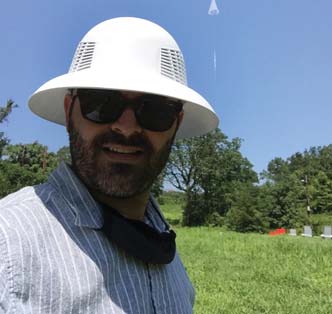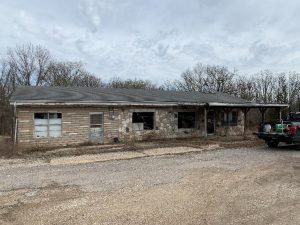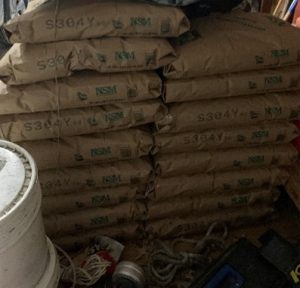USDA-ARS Bee Research Laboratory
By: Jay Evans
This month I was eager to interview my USDA-ARS Beltsville Bee Research Laboratory colleague, Dr. Mohamed Alburaki. Mohamed is the most recent scientist to join our group and he comes with a strong interest in queens, genetics and colony health.
Where are you from originally?
First of all, I want to say thank you, Jay, for this interview and for Bee Culture which does excellent work translating and simplifying honey bee science for all of us.
I am originally from Syria. I was born in Damascus and as my father was planning to pursue his Ph.D. studies on honey bees in France, my family moved to France where I spent most of my childhood.
How did you get interested in honey bees?
As I often say, love for honey bees and beekeeping runs in my family. Some of my earliest memories are of my grandfather’s colonies in his backyard. My grandfather’s passion for bees grew to a more professional level when my father decided to study bee behavior and became a professional beekeeper and scientist, keeping hundreds of colonies in Syria and France. As a child, I was exposed to the fascinating world of bees on a daily basis from a very young age. So, bees become your companion in life, you take care of them and every season they bestow their sweet honey on you. The more you get to know bees, the more questions arise in your head and the result, in my case at least, was that the father’s passion for bees was fully passed to his child. Since I mentioned Syria and France, I would like to share some beekeeping pictures with your readers that I took in these countries during my travels.
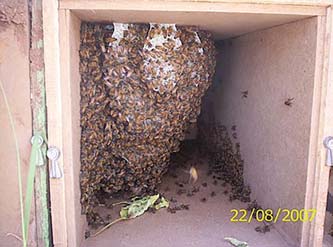
The amazing Syrian honey bee Apis mellifera syriaca in its native environment (Syria). Phenotypically very similar to ligustica but slightly smaller in size and more defensive. Note, ~90% of syriaca bees are hosted in regular 10-frame Langstroth hives.
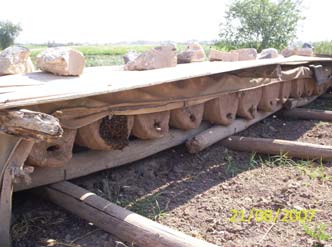
Traditional cylinder hives made of mud still used to host the Syrian honey bee Apis mellifera syriaca in the northern parts of Syria.
Where did you go to school and what did you study?
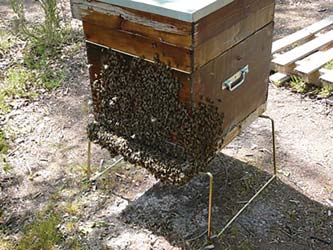
The Black European honey bee Apis mellifera mellifera hosted in a 10-frame Dadant hive, France.
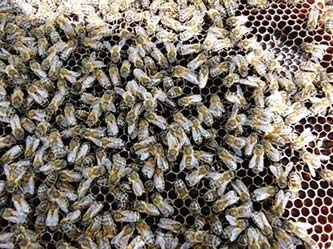
Beautiful Native French queen, drones and workers from the West Mediterranean lineage M, France.
My early desire to pursue studies on honey bees has shaped my entire education choice and career. In order for me to participate in honey bee research (my main objective), I had to first strengthen my knowledge in agricultural science. Coming from a family with an agriculture and farming background, this was kind of a natural choice for me! I obtained my Bachelor’s degree in Agricultural Science from the University of Damascus in Syria. I opted for the Department of Entomology, which would put me right on the doorstep of my main goal, honey bee research. But unfortunately, this was not enough to reach my ultimate goal. Since my deep interest was to explore and link honey bee behavior, phenotype, subspecies and diseases with bee genetic background and diversity, molecular knowledge and skills had to be acquired. Therefore, I pursued an international program led by the European Union and obtained a Master’s Degree in Biotechnology. During my master’s program, I conducted preliminary genetic analysis on honey bees at the CNRS institute in France and subsequently deepened my knowledge with a Ph.D. degree from the University of Pierre et Marie Curie – Paris, France.
What drove you to become a scientist?
The real desire to become a scientist for me was simply to find answers, answers to questions that were often not asked by others or remained unanswered. That being said, my case might be a bit different as my father was a honey bee researcher before me and one cannot minimize a parent’s inspiration on a child.
How did you start your career after school?
Well, the least I can say about my career is that it has been a real international and complex one! After I finished my Ph.D. in France, having already at this point left my birth country (Syria) for a second time and for over six years, I decided to conduct my first postdoctoral research in investigation of the impact of pesticides on honey bee health at Laval University in Quebec, Canada. I continued my research on the same topic during a second postdoc at the University of Tennessee in the USA, followed by a short third postdoc at the University of Southern Mississippi, in which I was looking at honey bee transcriptomic responses to biotic and abiotic stressors. Two years ago, I was fortunate to join the Bee Research Lab in Beltsville (USDA-ARS) as a Research Entomologist, working with a brilliant team of honey bee researchers, all united to find solutions for the betterment of honey bee health and beekeeping.
Where have you travelled in your studies of bees, what was most memorable?
During my exciting bee research and studies, I have been fortunate to travel and reside in many countries. As a Ph.D. student and postdoc, I have attended and presented at many bee conferences such as Apimondia, EurBee, ESA, and at many other local conferences and symposiums in the USA, Canada, France, Syria, Lebanon, Belgium, Ukraine and Turkey.
From a beekeeping stand point, these opportunities are immense! The ability to exchange expertise and discuss face-to-face with peers and colleagues from all over the world is absolutely priceless! I guess the most memorable thing to mention to your readers Jay, is that beekeeping practice and ideology are completely different from one country to another! Particularly, when we talk about countries located in different continents and with significant ecological and environmental variations. We have so far identified approximately 28 different honey bee subspecies! They may share general characteristics, nonetheless, each subspecies has some unique attributes still to be discovered and revealed. To make it short, experiencing first-hand bee local adaptations in their native environments and how the amazing diversity of honey bees is directly translated to behavioral changes, these are definitively the most memorable things in my mind.
What are the biggest challenges facing beekeepers moving forward?
This is a tricky question and the answer might vary slightly from one country to another. As I explained in the previous question, beekeeping practice varies between countries, which means that beekeepers worldwide are destined to face two types of challenges: firstly, universal challenges across the globe, and secondly, local problems related to each country’s conditions and beekeeping practice. Nowadays and due to the astounding and fast development in transportation and communication, the world has become a small village; which means that we need to look at both points I mentioned earlier concurrently. Honey bees have been gifted to all human kind after all, and it is our collective responsibility to take care of them and ensure their continuity and wellbeing. In my opinion, the biggest challenge facing beekeepers in the USA is our capacity to come together with stakeholders, farmers, ecologists and environmentalists and to demonstrate willingness to implement necessary changes and modifications in our beekeeping practices for more sustainable beekeeping and preservation of our ecosystem. Such changes would be guided by collective scientific outcomes and would significantly help to mitigate many of the problems facing the beekeeping industry as a business and the honey bee as an indispensable ecological resource.
What gives you hope? What are the best recent discoveries in bee science?
Hope is always there! We are a nation of great problem solvers, we have been and will always be, this is as long as we stand together and base our decisions on hard core scientific findings. We must lead this effort too, as we do in many other fields. I am hopeful because I know that we have a great number of fine professional and hobbyist beekeepers, queen breeders and producers in this country, as well as bee research laboratories working around the clock to find solutions for beekeeping problems and honey bee health challenges as soon as they appear.
Recently, I have read a few interesting discoveries in the realm of honey bee behavior and pathology that I would like to share with your readers:
How do bees in a swarm locate their queen? In a recently published study, Nguyen et al. were able to show that bees locate their queen by performing a cascade of “scenting” events where individual bees direct their pheromone signal by fanning their wings. During this process, the bees create a dynamic spatiotemporal network that recruits new broadcasting bees over time. The authors used a newly developed high-throughput machine learning tool, allowing them to identify the locations and timings of scenting events [1]. From a pathology stand point, a group of authors from the University of Texas described a promising new molecular method that can suppress deformed wing virus infection in bees and also reduce the rate of varroa mite infestation. The authors engineered a symbiotic bee gut bacterium to produce double-stranded RNA which can induce RNAi immune response in bees and in the parasitic mites as well [2]. This method was used to improve bee survival after a viral challenge. The downside of this method is potential alteration in bee physiology and behavior due to the introduction of dsRNA, which is still to be debated for many years to come. Nevertheless, this tool provides new insights on bee functional genomics which can help to perfect sergical use of RNAi approach for disease control in the near future.
Do you have hobbies and other interests beyond bees and science?
I must admit that most of my time is spent in science and honey bee research including beekeeping. In terms of sports, I have been a professional Karate player and coach for a long time, I like exercising and gardening too. Reading is a natural thing for me, I read books and articles in different languages on a wide range of topics such as religions, history, economy and politics.






